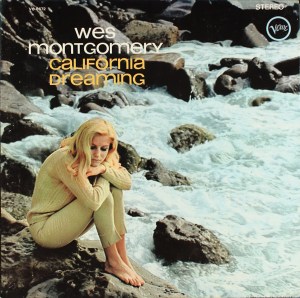 Reviews and Commentaries for the Music of Kenny Burrell
Reviews and Commentaries for the Music of Kenny Burrell
Reviews and Commentaries for Midnight Blue
One of our All Time Favorite Blue Note albums for music and sound – is there a better bluesy Jazz Guitar album? Midnight Blue is our favorite Kenny Burrell album of all time, at least in part because it’s one of the All Time Best Sounding Blue Notes.
Midnight Blue checks off a number of important boxes for us here at Better Records.
- It’s Kenny Burrell’s best sounding album (as far as we know) and a true jazz demo disc
- It’s one of Rudy Van Gelder‘s greatest recordings
- It’s a masterpiece as well as a member of our core jazz collection
- It’s a personal favorite, a record we’ve been obsessed with for a very long time
If you already own a copy of Midnight Blue and you don’t consider it one of the best sounding jazz guitar records in your collection, then you surely don’t have a copy that sounds the way our Hot Stamper pressings do. In other words, there is a very good chance you simply don’t know what you’re missing.
Don’t think this is just another 60s jazz guitar album. With Stanley Turrentine on sax and Ray Baretto on congas, this music will move you like practically no other. When Turrentine (a shockingly underrated player) rips into his first big solo, you’ll swear he’s right there in the room with you.
And if you do have one of our better Hot Stampers and it still isn’t the best sounding jazz guitar album in your collection, then you have one helluva jazz collection. Drop us a line and tell us what record you like the sound of better than Midnight Blue. We’re at a loss to think of what it might be.
Originals Vs Reissues
The reason this copy has such amazing transparency and such an extended top end compared to other copies is clearly due, at least to some degree, to the better cutting equipment used to master it. It’s the rare original Blue Note pressing that has this kind of resolution, leading-edge transient information, articulate bass definition, and big, bold but shockingly REAL sound.
Here is an example to the contrary. We played an early Blue Note mono pressing from 1956 that was fairly mind-blowing, so we have no doubt that it is possible for amazingly good sounding early pressings to exist. They are simply too much of an outlier for this fact to have any real value to the audiophile record collector of today.
How can anyone find, let alone afford, the five or more original Blue Note pressings that it would take to do a shootout?
What Are You Paying For?
Collectors routinely pay hundreds of dollars for original copies that don’t sound remotely as good as this one.
Which is fine by us. We’re not in that business.
We’re not selling the right labels; we’re selling the right sound. The two could not be more different.
Collecting single pressings of original albums is doable, albeit expensive.
Collecting good sounding pressings is hard. In fact, nothing in the record collecting world is harder.
But if you actually like playing your records as opposed to collecting them, then the best possible sound should be right at the top of your list and the rarity of the label at the very bottom.
Further Reading



 This vintage Prestige Stereo pressing has the kind of Tubey Magical Midrange that modern records rarely begin to reproduce. Folks, that sound is pretty much gone and sure doesn’t seem to be coming back. If you love hearing INTO a recording, actually being able to “see” the performers, and feeling as if you are sitting in the studio with the band, this is the record for you. It’s what vintage all analog recordings are known for — this sound.
This vintage Prestige Stereo pressing has the kind of Tubey Magical Midrange that modern records rarely begin to reproduce. Folks, that sound is pretty much gone and sure doesn’t seem to be coming back. If you love hearing INTO a recording, actually being able to “see” the performers, and feeling as if you are sitting in the studio with the band, this is the record for you. It’s what vintage all analog recordings are known for — this sound.